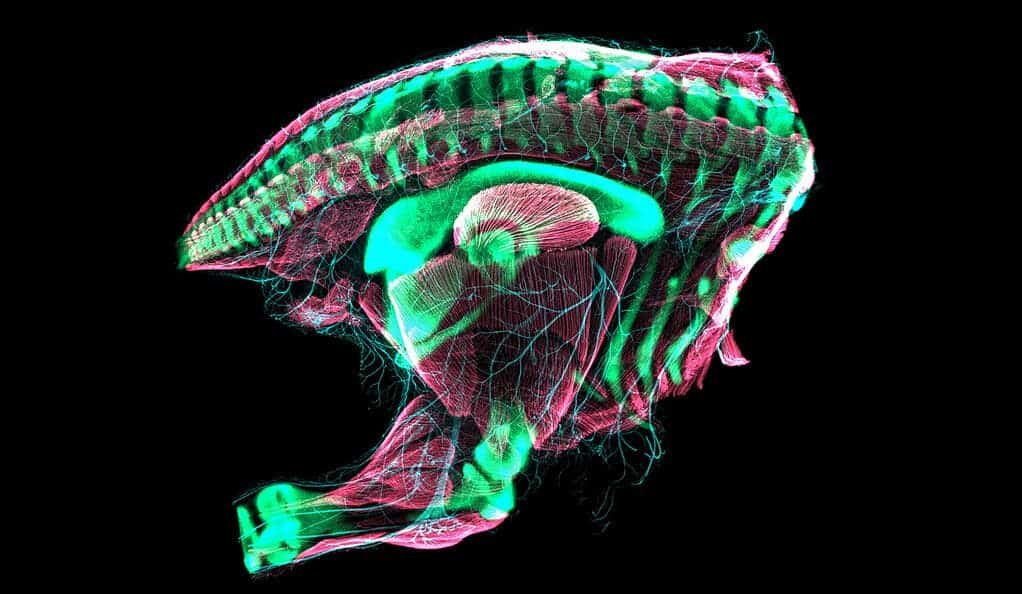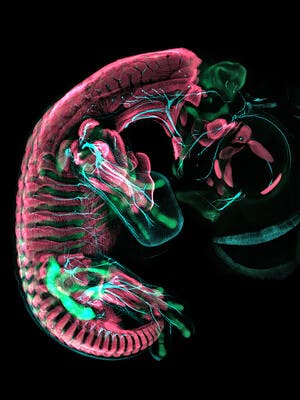
Have you ever wondered what a dinosaur really looked like? If so, drop your reptile-centric, Spielberg-warped preconceptions for a second and just look out the window for signs of chirping.
Birds aren’t just the descendants of dinosaurs — they are dinosaurs. Or a type of dinosaur to be more precise, belonging to the same theropod group of dinosaurs that included T. rex. Theropods are all bipedal and some of them share more bird-like features than others. The 150-million-year-old Archaeopteryx — a hybrid creature discovered in 1861 with feathered wings but with the teeth and long bony tail of a dinosaur — was for a long time the only truly bird-like dinosaur we knew of. Later, scientists found that Velociraptor, which is from the Late Cretaceous (100-66 million years ago), had bird-like feathers covering its body and other features that made it very related to modern birds.
The fact that birds and dinosaurs are evolutionarily intertwined is reinforced by a fascinating new study, in which researchers at Yale University showed how developing baby birds have — just moments prior to hatching — hip bones that are like a tiny replica of a dinosaur’s pelvis.
“Every single bird, in its early life, possesses this dinosaurian form,” said Bhart-Anjan S. Bhullar, assistant professor of Earth & planetary science at Yale and senior and corresponding author of the new study. “Then, at the last minute, it’s like it remembers it’s a bird and needs a bird’s pelvis.”
Bhullar and his team are experts at using computer tomographic (CT) scanning and microscopy to create 3D images of the embryos of various animals. Previously, they visually documented the development of the dinosaurian inner ear, the bird beak, the mammalian rolling jaw, and eyesight in vertebrates. These sorts of investigations can be extremely valuable as they can reveal key evolutionary transitions between non-avian dinosaurs, reptiles, and birds.
This time, Bhullar and colleagues applied the same techniques to study the pelvic development of alligators, domestic chickens, Japanese quail, Chilean tinamou, and parakeets. They then compared the embryonic development stages with those of dinosaurs, including the feathered species Archaeopteryx.
By tagging embryonic hip bones with antibodies, and then using confocal microscopes and CT scanning, the researchers could create striking images of translucent-looking embryos clearly showing developing hip bones, muscles, and nerves — all in three dimensions.

That’s how they learned that during a brief stage of its development, the bird pelvis is almost a one-to-one replica of the dinosaur’s pelvis, an example of what scientists call “terminal addition” — when ancestral features appear in the development of an animal. Embryonic parakeets, for instance, have pelvises that closely resemble those of Velociraptor.
“It was unexpected to find these initial stages of bird development look so much like the hips of an early dinosaur,” Christopher Griffin, a postdoctoral associate in Bhullar’s lab and lead author of the new study, said in a statement. “During just two days, the developing embryo changes in a way that reflects how they changed in evolution, transitioning from looking like an early dinosaur to looking like a modern bird.”
Dinosaurs did not swim or fly, not even the famous bird-like Archaeopteryx. Pterosaurs don’t count since they were reptiles. In many birds, however, the design of the hip bone is critical to their ability to sustain powered flight, so these latest observations could help scientists unravel the mystery of how flight among birds evolved.
“The bird body is incredibly modified in virtually every way to create an optimized flying machine,” Bhullar explained. “Its body structures are tightly constrained by the necessities of aeronautic design.”
The findings appeared in the journal Nature.
"bird" - Google News
August 10, 2022 at 07:50PM
https://ift.tt/8FxmBMY
Right before they hatch, baby birds have hip bones shaped exactly like a dinosaur’s pelvis - ZME Science
"bird" - Google News
https://ift.tt/PWR5qQC
https://ift.tt/tj8nRYJ
Bagikan Berita Ini















0 Response to "Right before they hatch, baby birds have hip bones shaped exactly like a dinosaur’s pelvis - ZME Science"
Post a Comment